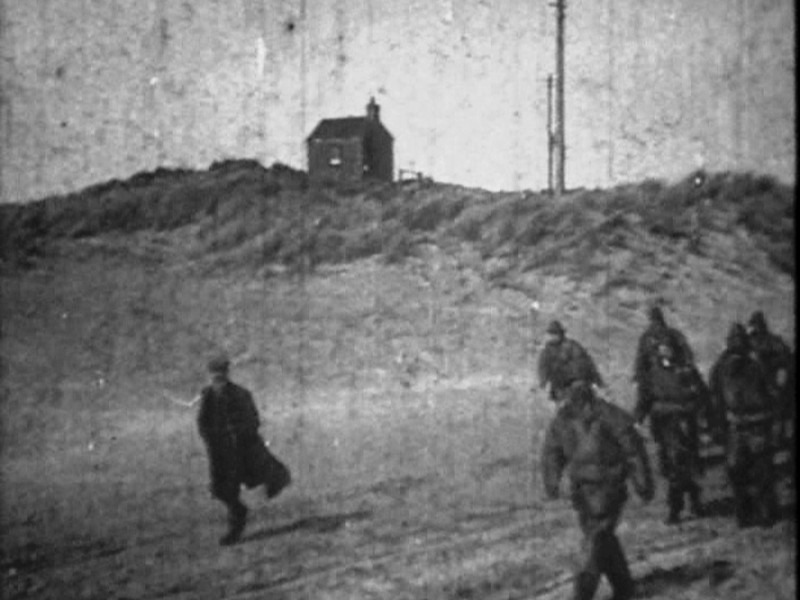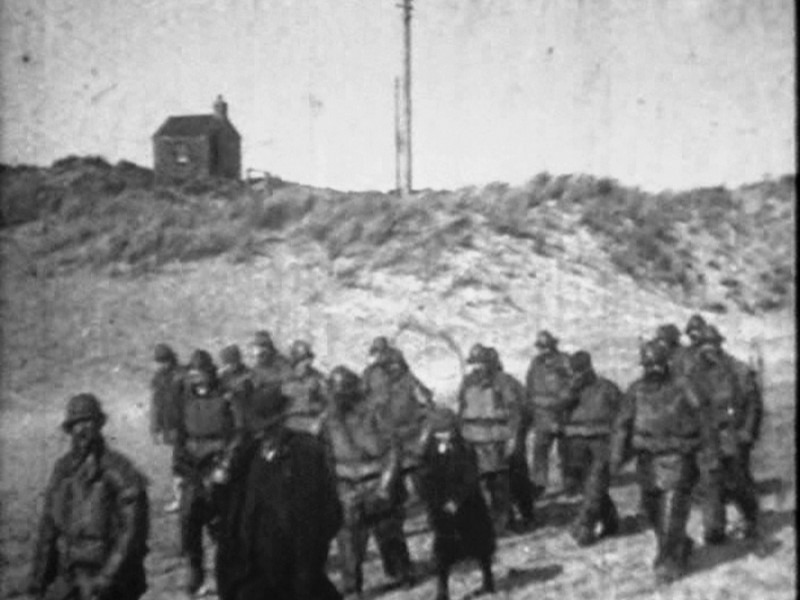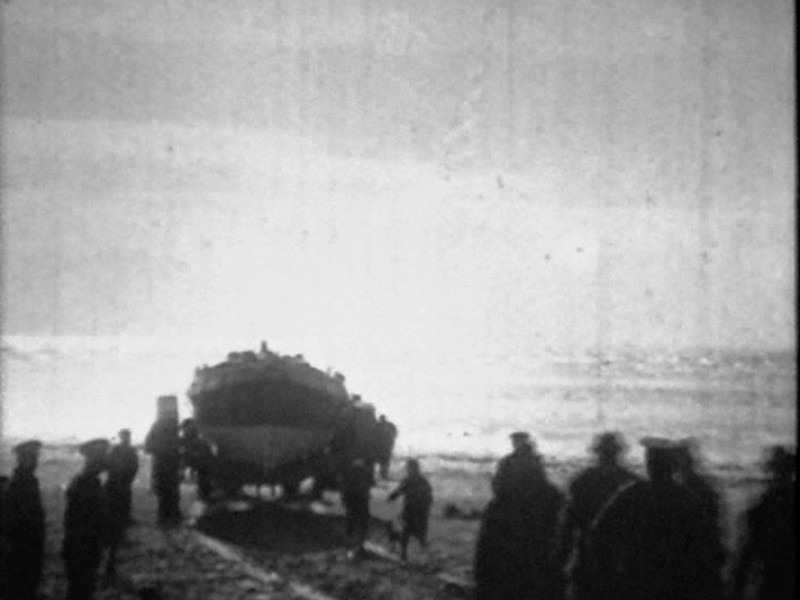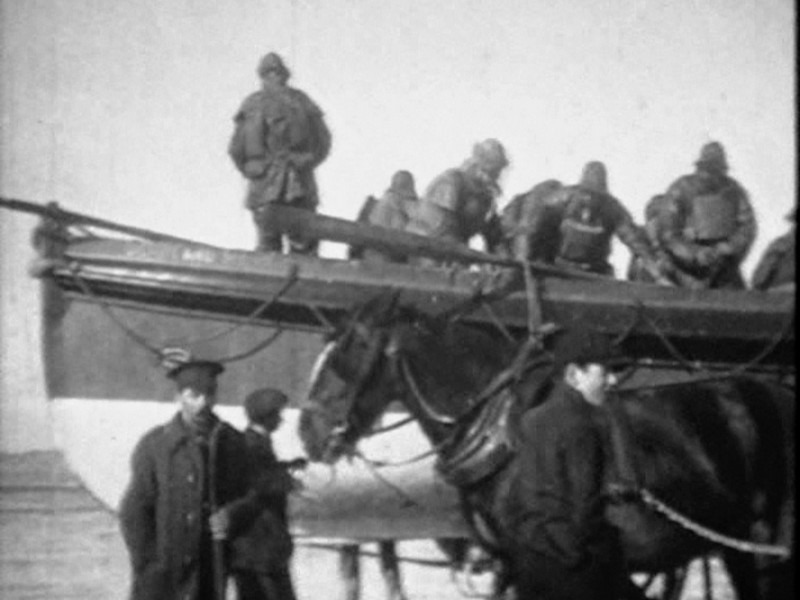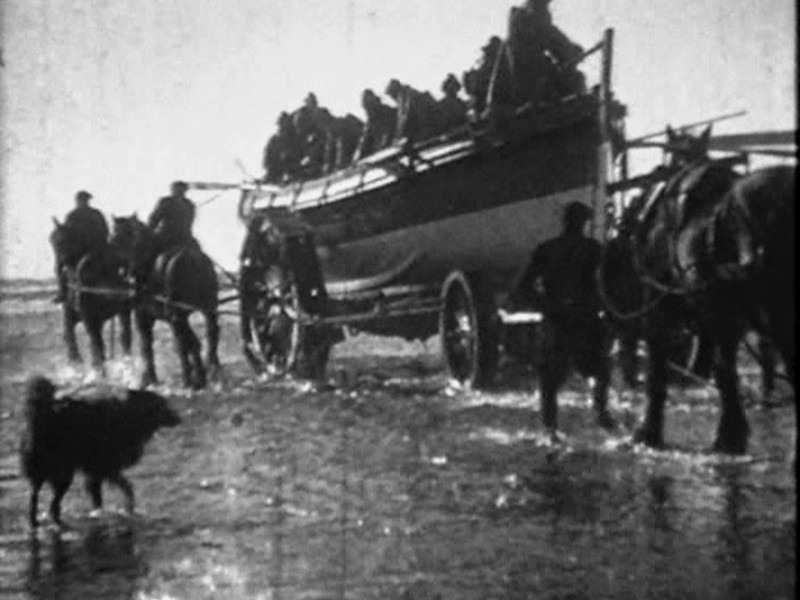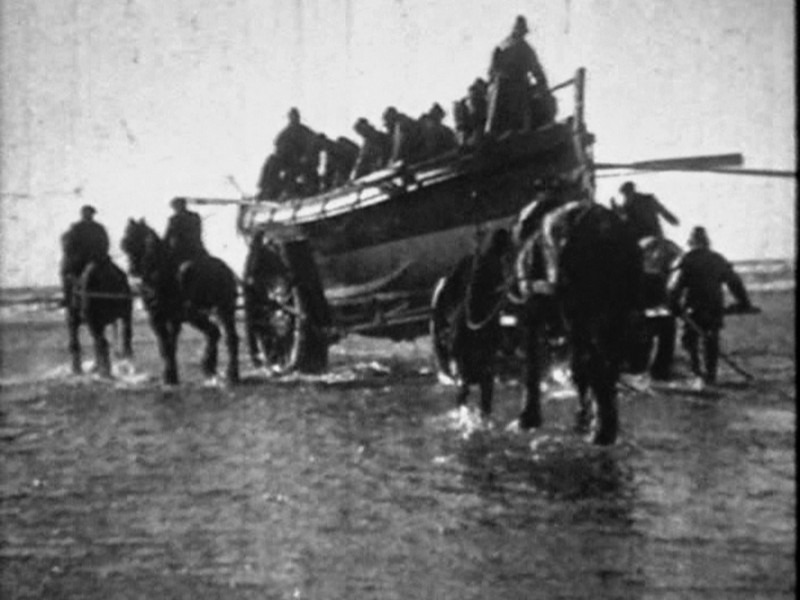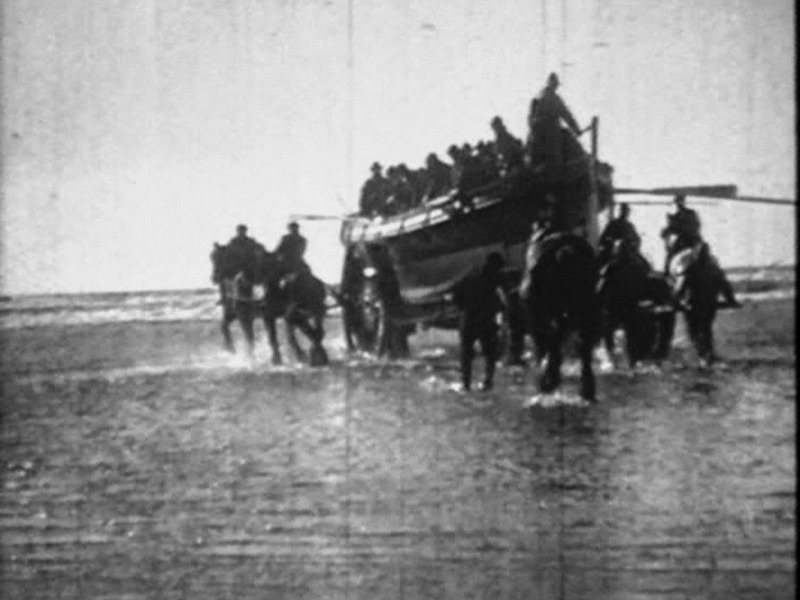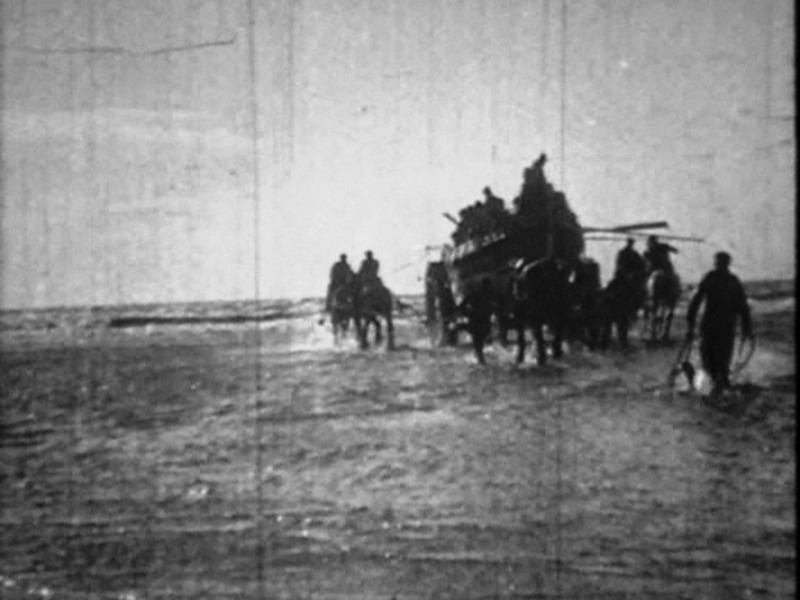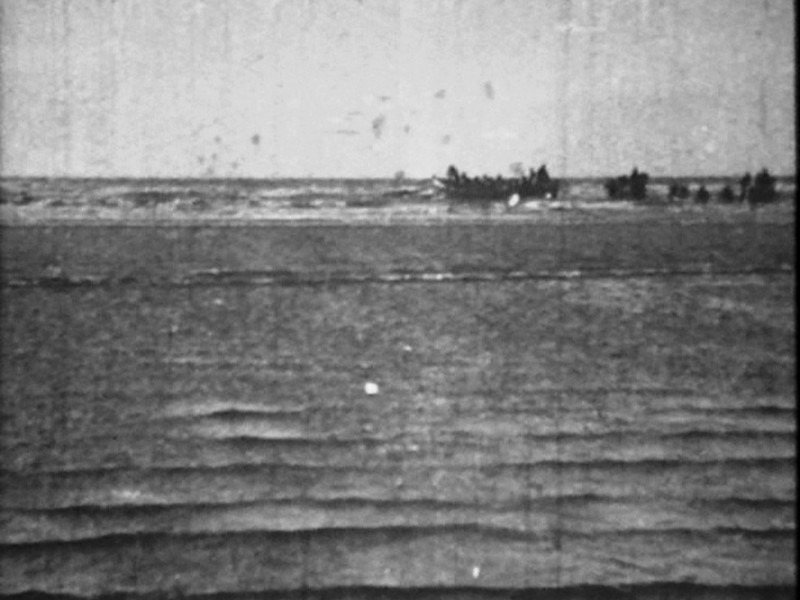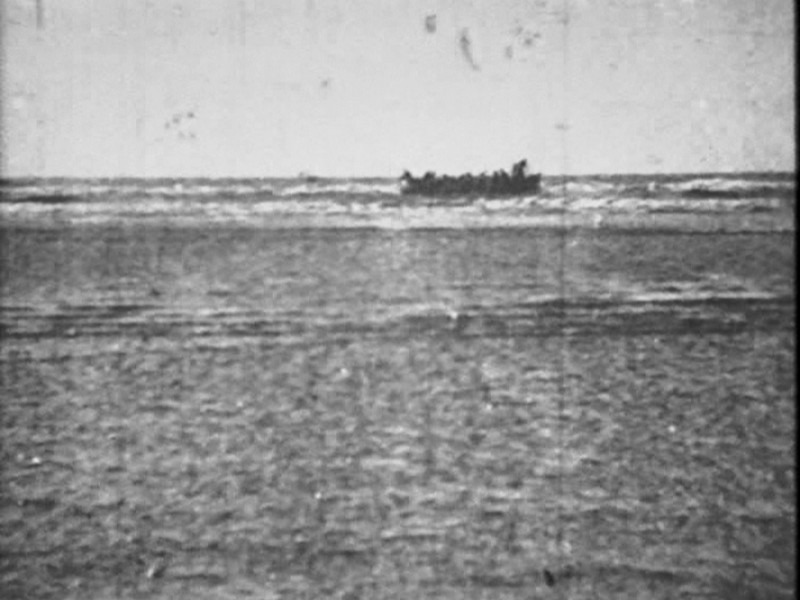The Origins of Britain’s First Lifeboat Station
Reg Yorke – March 2003
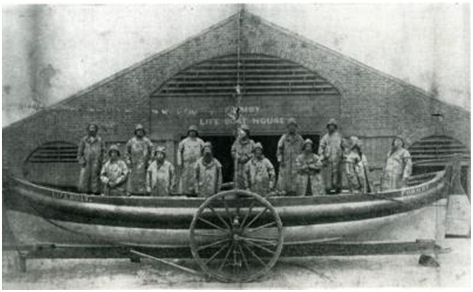
A footnote to ‘A Chart of the Harbour of Liverpool’ by P. P. Burdett, 1771, corrected 1776, provides the first documentary evidence of a ‘boat and station for saving lives’ in existence at Formby Point by 1776:
‘NB: On the strand about a mile below Formby Lower Land Mark there is a boathouse, and a boat kept ready to save lives from vessels forced on shore on that coast, and a guinea, or more, reward is paid by the Corporation for every human life that is saved by means of this boat, etc.’
It was William Hutchinson, the Liverpool Dock Master, a colourful and exceptional man whose classic ‘Treatise on Practical Seamanship’ published in 1776, included this chart who, supported by the Dock Trustees, arranged for Britain’s first such ‘life-boat station’ to be established at Formby.
The exact date of the establishment of Formby station remains uncertain as the minute book of the Dock Trustees prior to 1793 has long since been destroyed but was apparently between 1771 and 1776. A minute of the Liverpool Common Council dated March 5, 1777 indicates that the boat and boathouse had already been there long enough to need repair!
‘It is ordered that the boat and boathouse which was formerly ordered to be built and kept at Formby in readiness to fetch any shipwrecked persons from off the banks, be repaired and kept up for these purposes but that Mr Gerrard [the treasurer] do go over and agree with any person for such purport and what the same will have by the year to take care of the said house and boat and doing this humane and good service and report it to the Council.
At the next meeting of Council on April 2 it was ordered that:
‘Richard Scarisbrick of Formby, sailor, be appointed to take care of the boat and boathouse erected and provided to be built and stationed at Formby to assist and save shipwrecked persons and goods on this coast. And that Mr Gerrard do pay him the sum of five guineas for the good services by him already done herein and that he have a salary of two guineas a year from henceforth for such service. And that he and the boat’s crew shall be handsomely rewarded hereafter for such good service done herein and not less than one guinea per head for every life or person they shall save and to be further rewarded as the Council shall on enquiring find he or they merit to be paid out of the dock duties.’
Burdett’s chart was updated and reprinted in 1781 (see Fig. 1). In addition to a similar footnote (see Fig. 2) the position of the boathouse and boat is clearly indicated at Formby Point. Although not much is known about this boat or her service, we may guess that she was probably of the type known as a Mersey Gig, a generally two or three masted, versatile, sprit-sail rigged craft only requiring a crew of three or four and capable of being pulled or sailed.
In 1799 the Dock Committee appointed William Brown to look after the boat ‘in room of Robert Whitfield, deceased, with the like allowances as enjoyed by his predecessor’, and then on April 9, 1800, Robert Neale, the riding officer at Formby, was appointed to the care of the boat and boathouse ‘in the room of William Brown’.
The original boathouse was rebuilt in 1793 on the same site at the end of what subsequently came to be known as Lifeboat Road. According to a survey of the bay, when built it was situated 100 yards inland well above the high tide line on land belonging to the Reverend Richard Formby, the lord of the manor. This reverend gentleman was incumbent of St John’s, Liverpool, from 1784 to 1792 and later of Trinity Church, Liverpool. He seems to have had a local beneficial influence and interest in lifesaving somewhat akin to Dr John Sharpe at Bamburgh, as in 1798 we find he was presented with the Freedom of the Borough of the Town of Liverpool ‘as a mark of respect for his unwearied and compassionate attention in a variety of instances to the unfortunate who have suffered shipwreck on the coast near Formby, both with regard to their person and property’.
It is important to realise that the Formby lifeboat was the only one serving the harbour until 1803. Other Liverpool Bay stations were at the same time established, completing the far-sighted improvements to safe navigation of the Port of Liverpool at that time.
For more information see ‘Britain’s First Lifeboat Station, Formby, 1776 – 1918,
B. and R. Yorke; Alt Press. ISBN 0 9508155 0 0
A collection of stills showing a practice launch of the lifeboat in 1916
This video is copyright Formby Civic Society and shows the lifeboat launch
(unfortunately the video doesn’t play on an iPad or iPhone due to incompatibilities in iOS)

